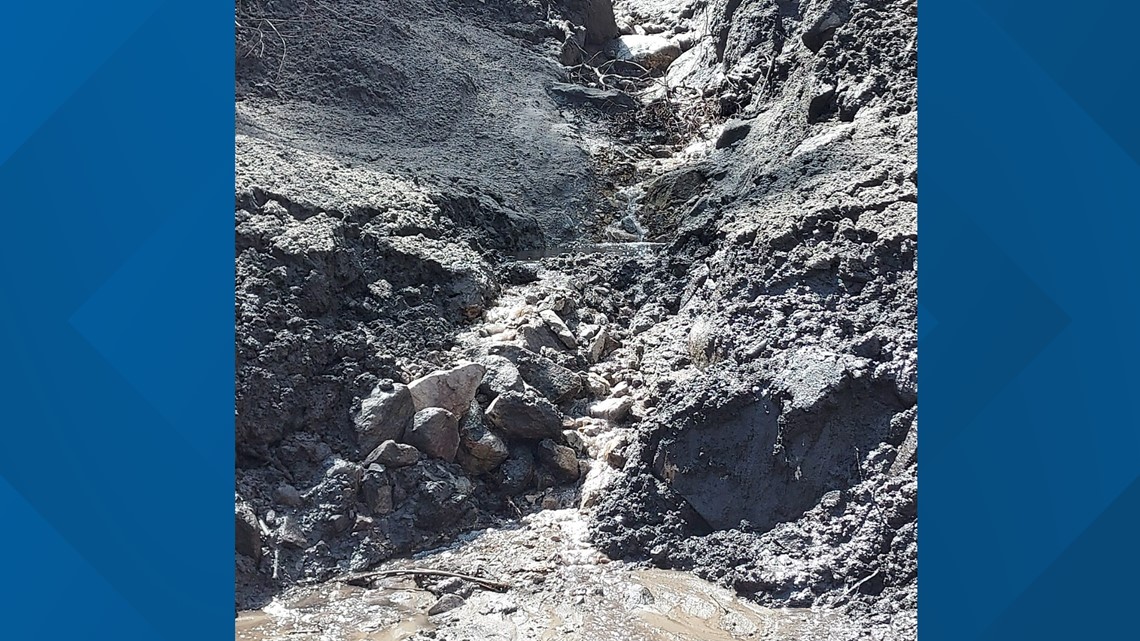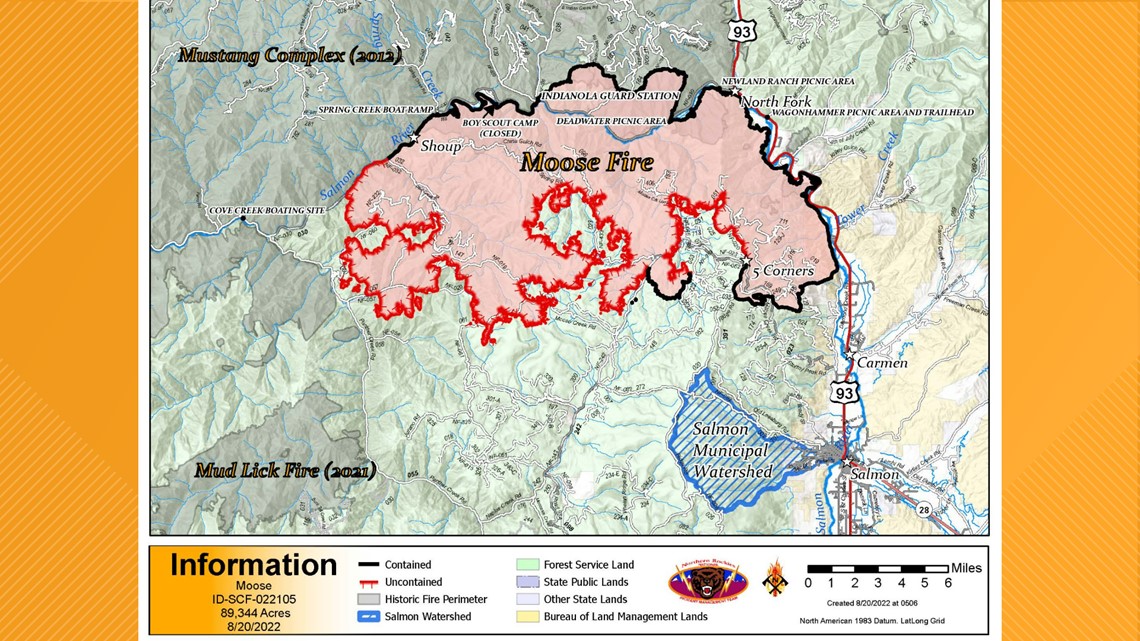LEMHI COUNTY, Idaho — Use caution when traveling in areas burned in the 2022 Moose Fire, officials with the Salmon-Challis National Forest advise.
Hazards resulting from the fire that burned more than 203 square miles northwest of Salmon include the potential for falling trees and the potential for slides that could send mud, rock and other debris onto roadways.
"Weather conditions such as precipitation and wind can rapidly change conditions on the ground," according to a June 7 news release from the Salmon-Challis National Forest.
The Moose Fire burned along the Main Salmon River adjacent to the Salmon River Road. The route from North Fork to Panther Creek is an area of particular concern.
The forest service said a slide recently blocked the Salmon River Road down river of Pine Creek, and there is ongoing potential for rocks and other debris to slough down onto the road and into the river.
Visitors should be prepared for the Salmon River Road to be temporarily closed as crews work to clear slides.


Also, increased water flow could overwhelm culverts, causing water and debris to flow across the road, potentially damaging the road. The forest service addressed such an issue earlier this spring where Wallace Creek crosses Stormy Peak Road.
Visitors to the Salmon-Challis National Forest "must be prepared to stay longer than expected due to changing circumstances," the forest service warned. Items to consider when preparing for a visit include:
- Adequate food, water, clothing, sleeping bags and other provisions needed in the event of inclement weather.
- Chainsaw and fuel, a handsaw, and a shovel, in case trees or other debris block road access.
- Inform someone about where you are going and when you plan to be back in case an emergency arises.
- Bring communication devices that will work in the area where you plan to travel — a cell phone, satellite phone, or satellite emergency notification device.
Extra caution for travel is encouraged, especially at night and other periods of low visibility. Damaged road surfaces may not be marked, and can be extremely hard to identify in the dark.
Finally, visitors may encounter streams or rivers with black or brown water, most likely after a thunderstorm or other severe weather event. This coloration is due to fine sediment and debris that run off the hillsides and into the waterways.
For the latest on conditions, call the Public Lands Center in Salmon at 208-756-5100 or check with local ranger district offices.


Watch more Local News:
See the latest news from around the Treasure Valley and the Gem State in our YouTube playlist:

